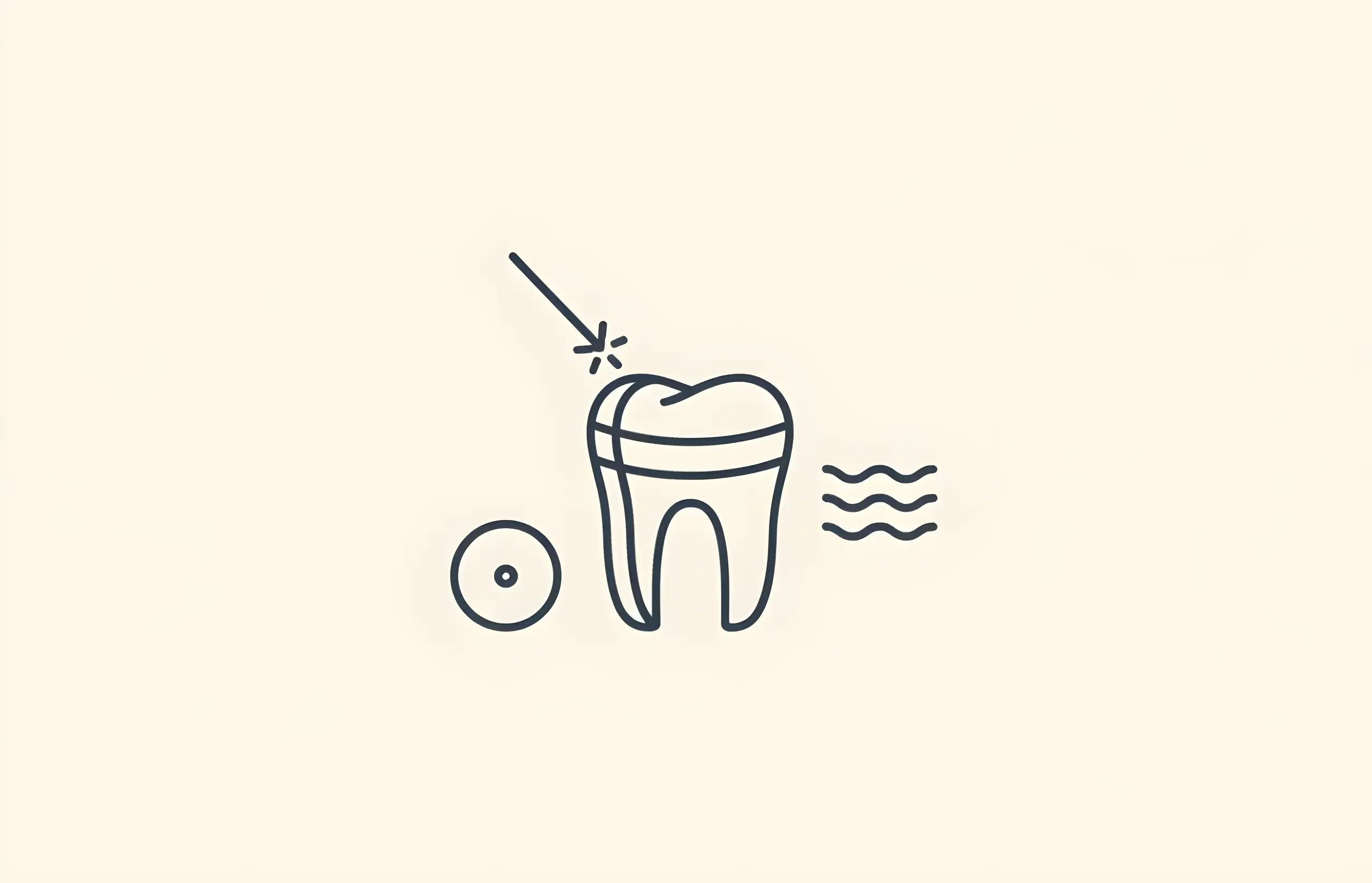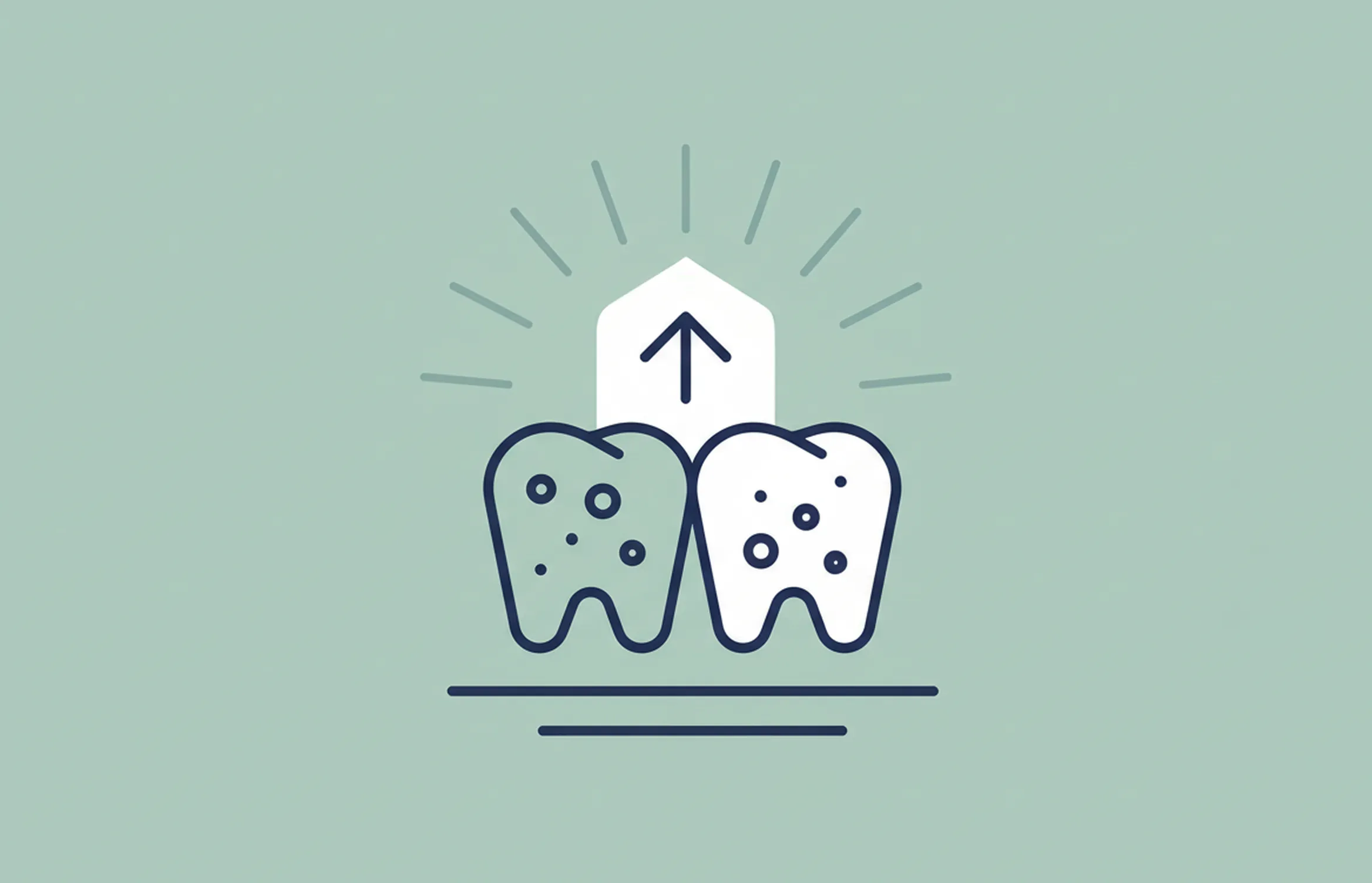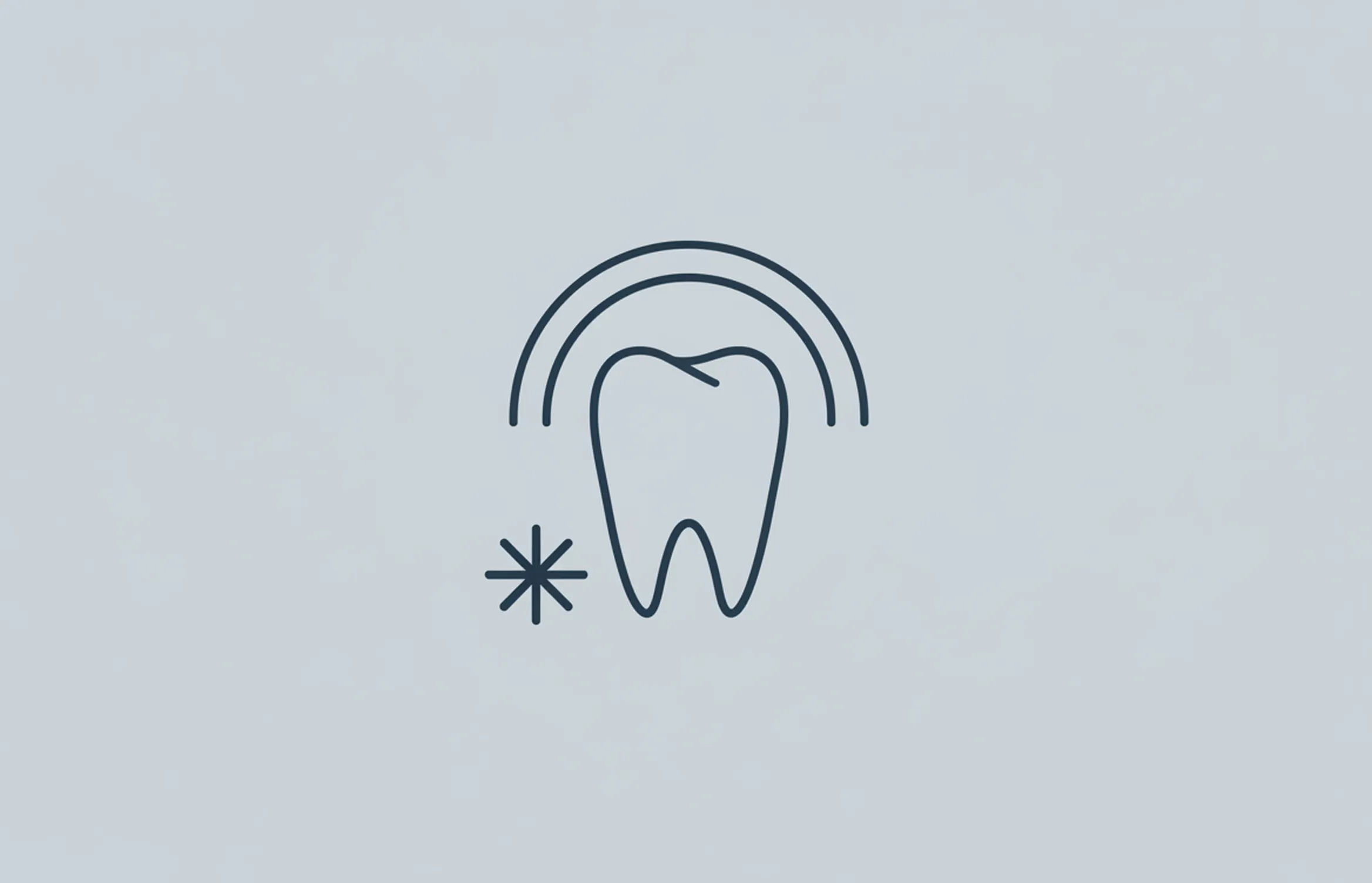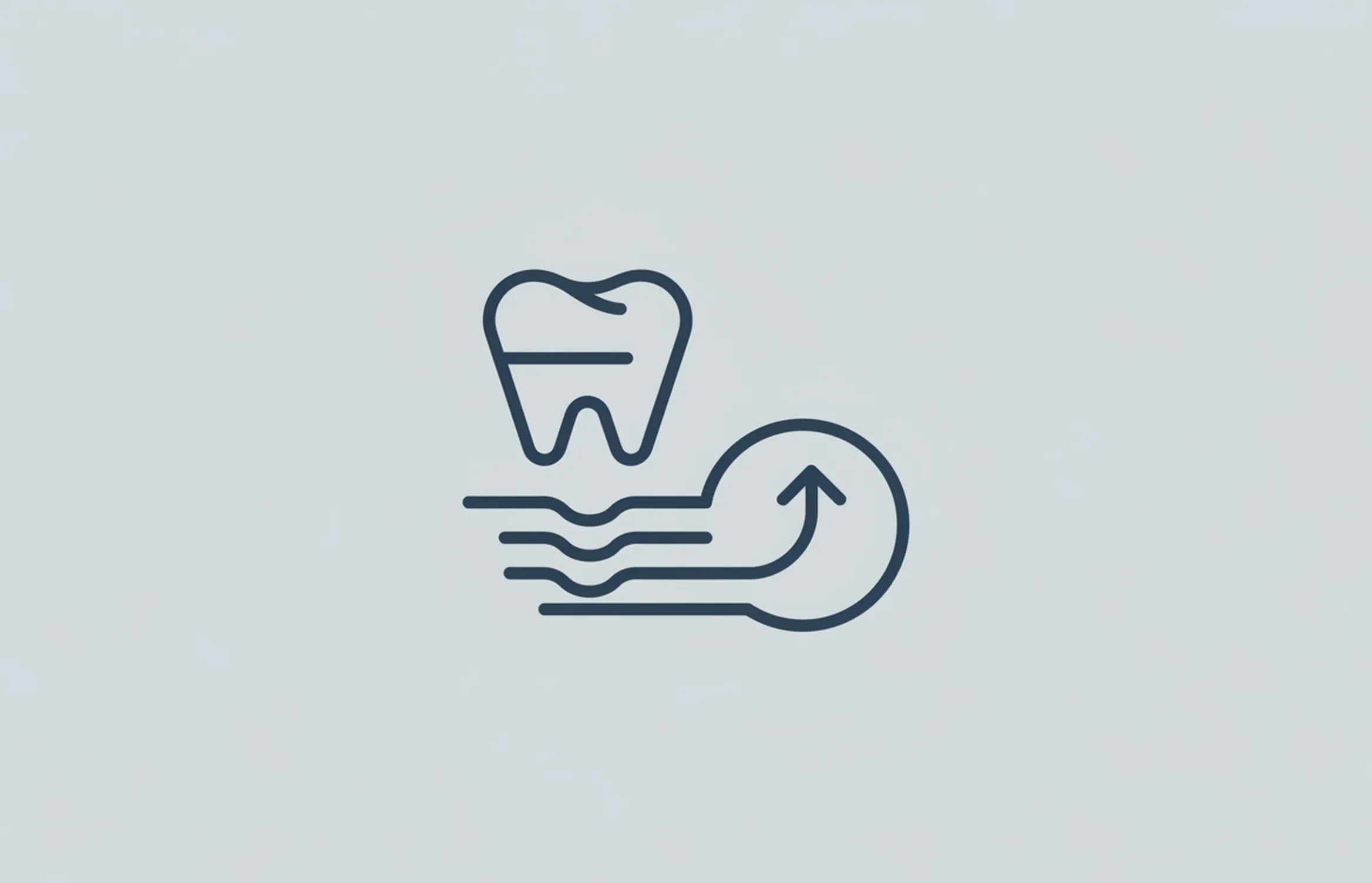Most people wish they had that Hollywood smile. The kind of smile that can light up the room and dazzle those around us. Unfortunately, when it comes to dazzling, most of us have to make do with a slightly sheepish, off-white grin. The good news is this needn't be the case.
There are so many teeth whitening options available now that there is no reason why we can't have beautifully white teeth. The advances in teeth whitening techniques over the last few years have been dramatic and what was once the preserve of the rich can now be done at home and at very little cost.
Does Tooth Whitening Work?
In a word, yes. Whitening can be very effective at lightening the colour of your teeth. Research published in 2024 confirms that "all bleaching methods demonstrated efficacy in improving tooth color" and that "all types of bleaching have been shown to be effective in changing color" regardless of concentration or application protocol.
A comprehensive review in the Journal of Evidence-Based Dental Practice states that when used following manufacturer instructions, hydrogen peroxide and carbamide peroxide-based whitening is "safe and effective."
It's largely non-invasive and will lighten the tooth without causing any damage to the surface when used properly. While it won't give you healthier teeth it will lighten them and give you a brighter smile. To qualify this it is important to understand how the process works.
How Teeth Whitening Works
As we age our teeth naturally change colour. This is caused by many factors. The things we eat and drink all contribute to the darkening of teeth. If you are a smoker this too will cause a change in the colour. In general, staining of teeth is unavoidable and, while cutting out smoking will help prevent further darkening, it is more difficult to avoid foods and drinks which contribute.
So as we reach a certain age we will notice a change in colour and decide to take steps to remedy this. There are basically three main methods of teeth whitening available:
- Teeth bleaching (professional or at-home)
- Whitening toothpaste
- Laser/LED whitening
Bleaching and using whitening toothpaste can be performed at home while laser treatment should be conducted by a professional.
The Chemistry of Bleaching
Bleaching is the most common approach to whitening. This can either be done at home with a do-it-yourself kit or through 'chair-side whitening', a process where the dentist will oversee the bleaching in his surgery.
The 'bleach' usually contains hydrogen peroxide or carbamide peroxide which when applied and broken down will react with oxygen to penetrate the enamel and dentine to make the tooth appear whiter.
While chair-side whitening can be usually be performed in a single visit, home bleaching will usually take two to four weeks.
Hydrogen Peroxide vs Carbamide Peroxide: The Science
A groundbreaking 2024 systematic review published in Restorative Dentistry & Endodontics compared these two popular whitening agents:
Effectiveness Comparison
The research found:
- 37% carbamide peroxide (CP) and 35% hydrogen peroxide (HP) provide statistically similar color when at least 3 bleaching sessions are performed
- With only 2 sessions, hydrogen peroxide demonstrates superior whitening results
- Evidence certainty was rated as "low" for efficacy
Sensitivity Outcomes - The Critical Difference
Here's where carbamide peroxide shines:
- 37% CP shows statistically lower sensitivity levels during bleaching sessions and for 2 subsequent days than 35% HP
- 35% HP had statistically higher gingival inflammation score (GIS) than CP
- Evidence certainty was "moderate" for sensitivity outcomes
Clinical Implication
While carbamide peroxide requires more treatment sessions, it offers a less uncomfortable patient experience with comparable final results when sufficient applications are completed.
A separate clinical trial confirmed that dentists using daytime bleaching can select either carbamide peroxide or hydrogen peroxide, as both provide similar long-term effectiveness after 7 and 14 days of use, despite hydrogen peroxide showing faster initial results at 5 days.
Professional vs At-Home Whitening: What Works Best?
A 2024 systematic review in Bioengineering examined different professional tooth whitening approaches and found surprising results:
At-Home Carbamide Peroxide: Superior Longevity
The winner for lasting results:
- At-home treatments with carbamide peroxide demonstrated "lower recurrence of treatment" compared to in-office approaches
- Superior longevity with fewer relapses over time
- Lower overall sensitivity compared to professional in-office treatments
In-Office Treatments: Faster But More Sensitive
Characteristics:
- Achieve results in single visit (under 1 hour)
- More dramatic immediate results
- 100% of patients experienced tooth sensitivity with 35% hydrogen peroxide in-office bleaching
- Teeth with existing restorations showed significantly greater sensitivity and pain intensity
- May require 2-3 follow-up sessions for optimal results
Combined Approaches: No Advantage
The research found that combined bleaching (in-office + at-home) offered no additional advantages and "may increase tooth sensitivity."
Whitening Strips vs Professional Bleaching
A comprehensive systematic review and meta-analysis published in Operative Dentistry in 2020 compared whitening strips against dentist-supervised at-home bleaching:
Color Change Results
Supervised at-home bleaching produced superior results when measured spectrophotometrically, though researchers noted the difference was "undetectable by unaided human eyes."
Sensitivity - Where Strips Excel
Whitening strips demonstrated advantages:
- Lower risk of tooth sensitivity compared to supervised bleaching
- Lower intensity of tooth sensitivity
- Evidence quality rated as moderate
Other Outcomes
No significant differences between methods regarding:
- Gingival irritation
- Color change measured by shade guide units
- Patient satisfaction levels
Clinical Takeaway
Whitening strips offer a gentler alternative despite producing marginally less dramatic color shifts than professional supervision. In practical terms, both achieve noticeable whitening that patients can see and appreciate.
Do LED Lights Actually Work for Whitening?
Despite aggressive marketing claims, the scientific evidence is clear:
The Consensus from Systematic Reviews
LED light activation provides minimal to no benefit:
A 2024 systematic review states: "LED light does not seem to significantly impact the efficacy of whitening."
Multiple systematic reviews confirm: "The use of light activator sources with in-office bleaching treatment of vital teeth did not increase the efficacy of bleaching or accelerate the bleaching."
"Although commercially claimed that in-office bleaching with light improves and accelerates color change, studies did not confirm this belief" for bleaching gels with either high or low hydrogen peroxide levels.
The Exception: Violet LED
One wavelength shows promise:
- Violet LED light (405-410 nm) could improve dental bleaching effectiveness without sensitivity increase
- Studies incorporating LED light showed post-treatment sensitivity appeared reduced
- Violet LED preserves tooth enamel integrity and causes no genotoxic effects
Bottom Line on Light Activation
Light activation provides no additional benefits for whitening outcomes or sensitivity reduction with most wavelengths. The chemical agents (hydrogen peroxide or carbamide peroxide) do the actual whitening work, not the light.
Whitening Toothpaste: Does It Really Work?
A 2018 systematic review analyzed 9 randomized clinical trials involving 1,399 participants (mean age 36.89 years):
Effectiveness Results
The evidence shows:
- Studies using VITA shade guide showed statistically significant differences between whitening and control groups
- Spectrophotometry studies produced mixed results
- All experimental groups showed color changes (ΔEab) higher than 2.7 - the established limit for clinically observing color changes
- Products containing hydrogen peroxide (1.0%) showed more consistent whitening effects
How Much Whitening to Expect
Realistic expectations:
- Whitening toothpastes typically lighten tooth color by 1-2 shades
- Requires 30-60 days of continuous use for visible results
- Primarily removes surface stains rather than achieving deep chemical bleaching
The Mechanism: Abrasion vs Chemical Bleaching
The systematic review noted that abrasive components in many whitening toothpastes primarily remove surface stains rather than achieving true whitening through chemical bleaching.
Safety Concerns
Research from a systematic review and meta-analysis found that whitening toothpastes:
- Increase surface roughness (p=0.04)
- Reduce microhardness (p=0.04)
- Affect mineral content of teeth
- Can cause scratches leading to discoloration
Clinical recommendation: While whitening toothpastes have potential in tooth whitening, results warrant careful interpretation given concerns about potential enamel damage from abrasive formulations.
Teeth Whitening for Sensitive Teeth
While teeth whitening is usually pain-free, the chemicals used can often cause some discomfort or irritation for those who suffer from sensitive teeth.
Sensitivity Statistics
How common is sensitivity?
- 43-80% of patients experience tooth sensitivity after whitening with peroxides
- 100% of patients experienced sensitivity with 35% hydrogen peroxide in-office bleaching
- Home-based bleaching produces less sensitivity than in-office treatments
- Mild tooth sensitivity is a common side effect; severe sensitivity occasionally occurs
Choosing Lower-Sensitivity Options
If you have sensitive teeth, research suggests:
- Carbamide peroxide over hydrogen peroxide - statistically lower sensitivity
- Whitening strips over supervised bleaching - lower risk and intensity
- At-home treatments over in-office - less sensitivity overall
- Violet LED if using light activation - may reduce post-treatment sensitivity
Alternatives for Very Sensitive Teeth
If your dentist feels you aren't a good candidate for bleach whitening, alternatives include:
Whitening toothpaste:
- Contains combination of baking powder and smaller levels of peroxide
- Many formulated specifically for sensitive teeth
- Takes considerably longer but avoids severe discomfort
Whitening strips without peroxide:
- Applied to teeth treated with accelerator gel
- Gently lighten teeth and remove stains
- Usually dissolve within 5-10 minutes
- Seldom contain any peroxide
Important: If you have an underlying dental problem your dentist will most often advise you to seek treatment for this before going through a whitening procedure.
Does Laser Whitening Work?
"Laser whitening" is somewhat of a misnomer - despite its name, laser whitening doesn't actually use a laser to get the job done.
How It Actually Works
Instead:
- Gums are covered by a guard
- An accelerating gel is applied to the teeth
- A light (not a laser) is shone on the area to speed up the whitening process
- Often known as "chair-side power whitening"
- Can only be performed by a qualified professional
Effectiveness
Laser whitening is very popular among people wanting to see their teeth become whiter quickly. It is a process which can be conducted in under an hour.
However, research shows that light activation doesn't actually improve whitening results beyond what the chemical gel alone achieves (see LED section above).
Longevity Concerns
It has been found that laser whitening doesn't last as long as bleaching with people often requiring 2-3 follow-up sessions. This is consistent with research showing at-home carbamide peroxide has lower recurrence and superior longevity.
Advantages
Despite limited additional efficacy from the light itself:
- Very fast (under 1 hour)
- Won't damage teeth's enamel when done properly
- Can be used to restore veneers, crowns, or fillings back to their original colour
Disadvantages
- Decidedly more expensive than other methods (£500-£1,500)
- Doesn't last as long as at-home bleaching
- 100% sensitivity rate with high-concentration peroxide gels
Laser Teeth Whitening Side Effects
Laser teeth whitening is a safe procedure which for the majority of the population will not cause any serious side-effects. However, as with bleaching, for some people there can be some mild and temporary side-effects.
Common Side Effects
The most common is an increase in tooth sensitivity for a couple of days after the process:
- Usually manifests when exposed to hot or cold drinks
- Some discomfort around the gums
- Some irritation in the throat
- These symptoms will disappear within a few days
When to Consult Your Dentist
If symptoms do not abate after a few days, it is important you consult your dentist.
Who Should Not Undergo Laser Whitening
Pregnant women should not undergo laser whitening. At the moment there has not been enough research into any effect the agents used may have on pregnant women and it is unknown if they could cause any harm to an unborn child. Your dentist will refuse to conduct the procedure if you fall into this category.
Safety and Enamel Concerns
Research shows teeth whitening safety depends heavily on proper use:
When Used Properly: Safe
Research confirms:
- When manufacturer instructions are followed, hydrogen peroxide and carbamide peroxide-based whitening is safe and effective
- At-home tooth bleaching with low concentrations have no significant damaging effects on enamel and dentin surface properties
- Overnight tray products containing 3.5%, 7.0%, and 12.0% hydrogen peroxide are not expected to adversely affect enamel or pulpal enzymes
When Used Improperly: Risks
Aggressive bleaching with high concentrations can cause:
- Enamel softening
- Surface roughness
- Increased susceptibility to demineralization
- Unacceptable color changes in dental restorations
Important note: These effects are based on in vitro findings with aggressive use beyond recommended protocols.
Side Effect Timeline
Even though treatment may cause side effects like sensitivity and gingival irritation, these usually disappear at the end of treatment.
How Long Do Results Last?
Research shows that whitening results persist approximately one year if teeth avoid staining agents like coffee and red wine.
Maintenance Tips
To extend results:
- Avoid or limit coffee, tea, red wine
- Don't smoke
- Use straw for staining beverages
- Maintain excellent oral hygiene
- Consider touch-up treatments every 6-12 months
Longevity by Method
Based on research findings:
- At-home carbamide peroxide: Superior longevity, lower recurrence
- In-office hydrogen peroxide: More recurrence, may need 2-3 follow-ups
- Whitening strips: Similar longevity to supervised bleaching
- Whitening toothpaste: Ongoing use required to maintain results
How Much Do Teeth Whitening Treatments Cost?
| Type | Approximate Price (UK) |
|---|---|
| Laser whitening | £500 - £1,500 |
| Professional bleaching | £150 - £700 |
| Home whitening kits | £10 - £200 |
| Whitening toothpaste | £2 - £10 |
For detailed cost breakdowns, see our comprehensive guide: Teeth Whitening Cost and Information
Choosing the Right Whitening Method
Based on the scientific evidence, here's how to choose:
For Best Overall Results with Least Relapse:
At-home carbamide peroxide (custom trays from dentist)
- Superior longevity
- Lower recurrence
- Less sensitivity than in-office
- 2-4 weeks treatment time
- Cost: £150-£700
For Fastest Results:
In-office hydrogen peroxide bleaching
- Results in under 1 hour
- Most dramatic immediate change
- Highest sensitivity (100% with 35% concentration)
- May need 2-3 follow-ups
- Cost: £500-£1,500
For Lowest Sensitivity:
Whitening strips or 37% carbamide peroxide
- Gentler on teeth
- Lower risk and intensity of sensitivity
- Still effective whitening
- Cost: £10-£200 (strips), £150-£700 (CP professional)
For Budget-Conscious:
Whitening toothpaste
- Most affordable (£2-£10)
- 1-2 shades improvement
- 30-60 days for results
- Can cause surface roughness with prolonged use
For Sensitive Teeth:
Carbamide peroxide products or whitening strips
- Avoid high-concentration hydrogen peroxide
- Consider products formulated for sensitivity
- Consult dentist before treatment
Related Whitening Resources
For more information on specific whitening methods:
- Do Whitening Strips Work?
- A Guide to Laser Teeth Whitening
- Hydrogen Peroxide Teeth Whitening
- How to Whiten Your Teeth with Baking Soda
- Natural Ways to Whiten Your Teeth
- How to Whiten Teeth with Braces
- Zoom Teeth Whitening Costs & Reviews
- KoR Teeth Whitening Cost
- Best Whitening Mouthwash
Final Thoughts
Does teeth whitening work? The scientific evidence overwhelmingly says yes:
Key Takeaways:
- All bleaching methods are effective at changing tooth color
- 37% carbamide peroxide = 35% hydrogen peroxide with 3+ sessions, but CP has lower sensitivity
- At-home carbamide peroxide shows superior longevity and lower recurrence than in-office
- Whitening strips cause less sensitivity than supervised bleaching with comparable patient satisfaction
- LED lights don't improve results (except possibly violet LED for reduced sensitivity)
- Whitening toothpaste works but only achieves 1-2 shades vs multiple shades with professional treatment
- Sensitivity affects 43-80% of patients (100% with 35% in-office HP)
- Results last approximately 1 year avoiding staining agents
When used following manufacturer instructions, hydrogen peroxide and carbamide peroxide-based tooth whitening is safe and effective. The key is choosing the right method for your needs, budget, and sensitivity tolerance.
Whether you opt for professional in-office treatment, at-home custom trays, over-the-counter strips, or whitening toothpaste, research confirms you can achieve a brighter, whiter smile. The question isn't "does it work?" - it's "which method works best for you?"
Consult with your dentist to determine the most appropriate whitening approach for your specific dental situation and aesthetic goals.
Sources and References
-
[1]
Can carbamide peroxide be as effective as hydrogen peroxide for in-office tooth bleaching and cause less sensitivity? A systematic reviewRestorative Dentistry & Endodonticshttps://pmc.ncbi.nlm.nih.gov/articles/PMC11148405/
-
[2]
Effectiveness of Whitening Strips Use Compared With Supervised Dental Bleaching: A Systematic Review and Meta-analysisOperative Dentistryhttps://pubmed.ncbi.nlm.nih.gov/33215202/
-
[3]
Tooth Whitening: What We Now KnowJournal of Evidence-Based Dental Practicehttps://pmc.ncbi.nlm.nih.gov/articles/PMC4058574/
-
[4]
Efficacy of Dental Bleaching with Whitening Dentifrices: A Systematic ReviewInternational Journal of Dentistryhttps://pmc.ncbi.nlm.nih.gov/articles/PMC6232812/
-
[5]
Evaluation of the Effectiveness of Different Types of Professional Tooth Whitening: A Systematic ReviewBioengineering (Basel)https://pmc.ncbi.nlm.nih.gov/articles/PMC11672885/
All sources accessed and verified on . Medical information reviewed for accuracy and compliance with current guidelines.
Related Articles

A Guide to Laser Teeth Whitening
Comprehensive information about laser teeth whitening including benefits, procedure details, costs, and effectiveness of this professional cosmetic dental treatment

Choosing the Best Whitening Mouthwash
Complete guide to selecting effective whitening mouthwash including hydrogen peroxide safety, efficacy research, key ingredients, and what to look for in whitening mouthrinse products

Do Whitening Strips Work?
Evidence-based guide to teeth whitening strips effectiveness including clinical trial results, comparison with professional treatments, safety profile, tooth sensitivity rates, and how to achieve optimal results

How Long Does It Take For Baking Soda To Whiten Teeth?
A guide to using baking soda for teeth whitening at home, including methods, timeframes, safety considerations, and effectiveness

How to Whiten Teeth with Braces
Guide to teeth whitening options during orthodontic treatment, including in-office treatments, at-home whitening kits, and whitening toothpastes

A Guide to Hydrogen Peroxide Teeth Whitening
Comprehensive information about using hydrogen peroxide for teeth whitening, including safety, effectiveness, proper usage methods, and professional vs. at-home treatments

How Much Does KoR Teeth Whitening Cost?
Comprehensive guide to KoR Whitening system including mechanism, custom trays, peroxide gel refrigeration, desensitizing agents, pros and cons, typical costs (£450-£700), and comparison with alternative whitening systems

Natural Ways to Whiten Your Teeth
Explore natural teeth whitening methods including brushing, coconut oil pulling, baking soda with peroxide, and their effectiveness based on scientific evidence

Teeth Whitening Cost and Information
Comprehensive guide to professional and at-home teeth whitening options, comparing costs (£10-£1500), effectiveness, safety, and treatment methods including laser whitening, bleaching gels, and whitening strips
Zoom Teeth Whitening Costs & Reviews
Professional Light-Activated Whitening Analysis (15-78% Experience Sensitivity, Conflicting Efficacy Evidence)
About The Dental Guide
The Dental Guide is a trusted online resource providing evidence-based information about dental health, treatments, and procedures. Our content is created and reviewed by qualified dental professionals to help you make informed decisions about your oral health.
Our Mission
- Evidence-based dental information
- Expert-reviewed content
- Clear, accessible explanations
- Latest treatment options
- Patient-focused guidance
Editorial Standards
- GDC-registered dental professionals
- Peer-reviewed sources
- Regular content updates
- Medical accuracy verification
- Transparent authorship
Important Notice
The information on The Dental Guide is for educational purposes only and should not replace professional dental advice. Always consult with a qualified dentist for diagnosis and treatment recommendations tailored to your individual needs and circumstances.
Medically Reviewed
Reviewed by Dr. Nasim Mechoui , BDS (Bristol)
Share this article
Comments & Discussion
Have questions about dental implants? Share your thoughts or experiences.
